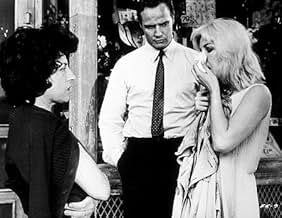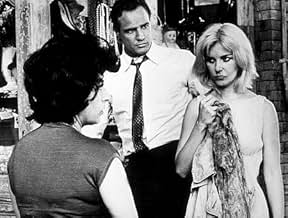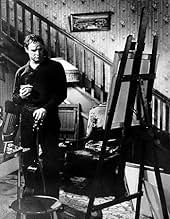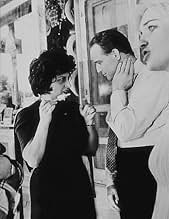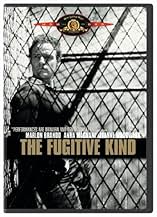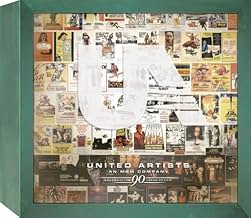IMDb-BEWERTUNG
7,1/10
7865
IHRE BEWERTUNG
Füge eine Handlung in deiner Sprache hinzuA guitar-playing drifter wanders into a small Mississippi town and inflames two troubled women.A guitar-playing drifter wanders into a small Mississippi town and inflames two troubled women.A guitar-playing drifter wanders into a small Mississippi town and inflames two troubled women.
- Auszeichnungen
- 2 wins total
Madame Spivy
- Ruby Lightfoot
- (as Spivy)
Jeanne Barr
- Bit Part
- (Nicht genannt)
Empfohlene Bewertungen
Tennessee Williams and Meade Roberts co-adapted Williams' play "Orpheus Descending" about a reluctant stud drifting through backwater town, stirring up the passions of an Italian shopkeeper who's married to a cranky invalid. Eerie and fabulously atmospheric piece gives the women in particular (Anna Magnani, Joanne Woodward, Maureen Stapleton) great roles to play. Marlon Brando, well-cast as the guitar-strumming gadabout with the bedroom eyes, doesn't seem as fully involved, and his focus tends to wander. Overall, an intriguing soap opera for mature audiences, beautifully photographed by Boris Kaufman and nimbly directed by Sidney Lumet. *** from ****
Released in 1960 and directed by Sidney Lumet from Tennessee Williams' screenplay, "The Fugitive Kind" is a B&W southern Gothic drama starring Marlon Brando as loner minstrel Val "Snakeskin" from New Orleans in pursuit of a new life and the people with whom to live it. He stumbles upon a Mississippi town and gets a job at a mercantile store, which is run by a lonely passed-her-prime woman, Lady (Anna Magnani). While Snakeskin works the store downstairs, Lady's terminally ill husband is bedridden upstairs (Victor Jory). Joanne Woodward plays a histrionic beatnik while Maureen Stapleton is on hand as a housewife enamored by Snakeskin. R.G. Armstrong appears as the redneck sheriff.
The first time I watched this movie (in 2008) I didn't much like it, probably because I wasn't familiar with Williams' stagey, melodramatic style of writing. However, after just viewing Williams' "The Night of the Iguana" (1964) and really appreciating it, I had a taste for more and so gave "The Fugitive Kind" a second chance. I'm glad I did because, this time, I was able to discern its highlights and got a lot more out of it.
Marlon was in the midst of my favorite period of his career while filming this movie. Arguably his greatest films, "The Young Lions" (1958), "One-Eyed Jacks" (1961) and "Mutiny on the Bounty" (1962), were all shot during this time. While "The Fugitive Kind" is easily the least of these it's worth checking out for a number of reasons, as long as you're in the mood for a talky adult melodrama. Like "The Night of the Iguana," this is a brooding rumination on the nature of existence. As such, there are numerous treasures to glean from the seemingly interminable dialogues. The movie's overlong and could've been tightened up, but the interspersed riches hidden within make it worth staying with, but you have to be a seasoned adult to appreciate it or, at least, mature for your years.
Woodward's beatnik character is interesting as she's basically a hippie before hippies existed. Although her character is histrionic and somewhat annoying, some of her reflections are poignant, like in the interesting cemetery scene with Snakeskin. Emory Richardson is almost fascinating as Carol's silent black friend in a racist community. Some of their platonic imagery together is unexpected and intriguing for a film shot in 1959.
Brando was 35 during filming and became the first actor to make $1 million for a single film (although Elizabeth Taylor earlier signed a $1 million contract for "Cleopatra," that movie wasn't released until 1963). Magnani was 51 and hot to sleep with the star, but Marlon didn't find her attractive which, needless to say, negatively affected the shoot. This is surprising because some of their scenes together are quite good. I incidentally had an Italian neighbor who passed away six weeks ago who was strikingly reminiscent of Magnani's character, both looks-wise and temperament-wise. So I know firsthand that people like her exist.
The film runs 119 minutes and was shot in Milton, New York.
GRADE: B
The first time I watched this movie (in 2008) I didn't much like it, probably because I wasn't familiar with Williams' stagey, melodramatic style of writing. However, after just viewing Williams' "The Night of the Iguana" (1964) and really appreciating it, I had a taste for more and so gave "The Fugitive Kind" a second chance. I'm glad I did because, this time, I was able to discern its highlights and got a lot more out of it.
Marlon was in the midst of my favorite period of his career while filming this movie. Arguably his greatest films, "The Young Lions" (1958), "One-Eyed Jacks" (1961) and "Mutiny on the Bounty" (1962), were all shot during this time. While "The Fugitive Kind" is easily the least of these it's worth checking out for a number of reasons, as long as you're in the mood for a talky adult melodrama. Like "The Night of the Iguana," this is a brooding rumination on the nature of existence. As such, there are numerous treasures to glean from the seemingly interminable dialogues. The movie's overlong and could've been tightened up, but the interspersed riches hidden within make it worth staying with, but you have to be a seasoned adult to appreciate it or, at least, mature for your years.
Woodward's beatnik character is interesting as she's basically a hippie before hippies existed. Although her character is histrionic and somewhat annoying, some of her reflections are poignant, like in the interesting cemetery scene with Snakeskin. Emory Richardson is almost fascinating as Carol's silent black friend in a racist community. Some of their platonic imagery together is unexpected and intriguing for a film shot in 1959.
Brando was 35 during filming and became the first actor to make $1 million for a single film (although Elizabeth Taylor earlier signed a $1 million contract for "Cleopatra," that movie wasn't released until 1963). Magnani was 51 and hot to sleep with the star, but Marlon didn't find her attractive which, needless to say, negatively affected the shoot. This is surprising because some of their scenes together are quite good. I incidentally had an Italian neighbor who passed away six weeks ago who was strikingly reminiscent of Magnani's character, both looks-wise and temperament-wise. So I know firsthand that people like her exist.
The film runs 119 minutes and was shot in Milton, New York.
GRADE: B
Based on the play "Orpheus Descending" by Tennessee Williams directed by Sidney Lumet with an exceptional cast: Marlon Brando, Anna Magnani, Joanne Woodward, Maureen Stapleton and Victor Jory. I saw it for the first time when I was still in my teens and I had an opaque, sticky memory of the film so when somebody suggested to see it on DVD I knew we were in for an opaque, sticky evening but, as it happens, I was dead wrong. "The Fugitive Kind" is riveting with an opening monologue by Brando that is astonishing. A 1960 Brando when he had still, I imagine. hopes to be the actor, the man he wanted to be. There is an animal innocence in his eyes in his moves. The magnificent Magnani, who learned her lines phonetically because she didn't know English presented Brando with a challenge as an actress and as a woman. I hear it wasn't pretty but the result is a feast for the eyes and the ears. The film may not be perfect but I don't think the original material was either so what we got here is a unique opportunity to see this enormous artists giving their whole. That alone makes it a collectors item.
The Fugitive Kind is a hot story of desire and loss and craving and heartbreak between a man and two women set in the deep south. Sounds like quintessential Tenessee Williams, and it is in spurts. Sometimes Williams leans towards being a little preachy, however true (little moments like when Brando and Stapleton have a quiet back and forth about racism via her painting kind of nails it on the head much), but it's his skills at doing melodrama that strike up the coolest beats. In fact, this is one of those super-cool movies of the late 50s that could have only starred someone like Brando, who looks at times disinterested in the scene but at the same time completely engaged, curious, smooth, harsh, and knowing of what life can bring with his trusty Ledbelly-signed guitar. It's not necessarily a towering work for the ages ala Williams collaboration 1 Streetcar Named Desire. But that doesn't mean it should be much under-looked either.
As an early effort for Lumet it's also a scorcher dramatically; he's so good with the actors that whatever little missteps the script might take in pouring on the poetic prose in how some of the characters talk (there's a scene between Brando and Anna Magnani's characters by some ruin of a spot where she says people used to make love that is actually quite boring) can be usually forgiven. Magnani especially is interesting because she should be a case of miscasting, which, apparently in later years, Lumet admitted to. She seems low-key at first, but her strengths bloom out tenfold when it comes time to act like the hard-knock-life kind of woman she is, who's in a crap marriage and had a horrible affair with a man who didn't do anything after the summer they spent together. Now she's put into a situation where she does and doesn't want this drifter, and vice versa, and she's sometimes just as cool (though also quite tough and demanding in that big Italian mama way) as her counterpart.
Meanwhile there's also Joanne Woodard, who has the kind of part many actresses love to chew on; feisty, outspoken, loud but also emotionally moody to the point that she admirably tries (and doesn't quite get to) the heights of Vivien Leigh with her classic Blanche Dubois. Overall, Lumet gets a good feel for the period- and shot in New York state no less- while working with good material and an even better cast. It won't ever be as revered as his other work, and at the same time it's much better than some would give it credit for, where the tragedy acts like another sweaty Southern caricature bemoaning existence and fitting on a bad pair of shoes.
As an early effort for Lumet it's also a scorcher dramatically; he's so good with the actors that whatever little missteps the script might take in pouring on the poetic prose in how some of the characters talk (there's a scene between Brando and Anna Magnani's characters by some ruin of a spot where she says people used to make love that is actually quite boring) can be usually forgiven. Magnani especially is interesting because she should be a case of miscasting, which, apparently in later years, Lumet admitted to. She seems low-key at first, but her strengths bloom out tenfold when it comes time to act like the hard-knock-life kind of woman she is, who's in a crap marriage and had a horrible affair with a man who didn't do anything after the summer they spent together. Now she's put into a situation where she does and doesn't want this drifter, and vice versa, and she's sometimes just as cool (though also quite tough and demanding in that big Italian mama way) as her counterpart.
Meanwhile there's also Joanne Woodard, who has the kind of part many actresses love to chew on; feisty, outspoken, loud but also emotionally moody to the point that she admirably tries (and doesn't quite get to) the heights of Vivien Leigh with her classic Blanche Dubois. Overall, Lumet gets a good feel for the period- and shot in New York state no less- while working with good material and an even better cast. It won't ever be as revered as his other work, and at the same time it's much better than some would give it credit for, where the tragedy acts like another sweaty Southern caricature bemoaning existence and fitting on a bad pair of shoes.
This is not a well-written film, but the acting is phenomenal. Brando and Magnani have really great chemistry and that's what carries the film. It is the acting of these two that make me want to watch this film time and time again. I didn't necessarily like Joanne Woodward in her role, it just didn't seem to fit her. It seemed like she was trying too hard or something, so I just tuned her out. But I was always tuned into Brando--its just something about him that just pulls you in--wondering what he'll do next in the scene. Anyway, The cinematography is great and adds to the moodiness of the film. Overall, the movie isn't necessarily Brando's greatest film, but it's by no means one of his worst. Unfortunately, there wasn't much to work with as far as the script, so the acting had to carry the film.
Wusstest du schon
- WissenswertesMarlon Brando described Anna Magnani as being equally fiery and passionate off screen. He claimed she made a pass at him in a hotel before filming began.
- PatzerAt the cemetery, Xavier returns to the car and turns on its headlights. A much brighter studio light comes on a beat too late to further illuminate the right side of the frame.
- Zitate
Lady Torrance: Tell me some more about your self-control.
Valentine Xavier: Well, they say that a woman can burn a man down, you know? But I can burn a woman down. I'm saying that I could. I'm not saying I would.
Lady Torrance: What's the matter? Have they tired you out?
Valentine Xavier: No, I'm not tired.
Top-Auswahl
Melde dich zum Bewerten an und greife auf die Watchlist für personalisierte Empfehlungen zu.
- How long is The Fugitive Kind?Powered by Alexa
Details
- Erscheinungsdatum
- Herkunftsland
- Sprache
- Auch bekannt als
- El hombre de la piel de víbora
- Drehorte
- Produktionsfirma
- Weitere beteiligte Unternehmen bei IMDbPro anzeigen
Box Office
- Budget
- 2.000.000 $ (geschätzt)
- Laufzeit
- 1 Std. 59 Min.(119 min)
- Farbe
- Seitenverhältnis
- 1.66 : 1
Zu dieser Seite beitragen
Bearbeitung vorschlagen oder fehlenden Inhalt hinzufügen


